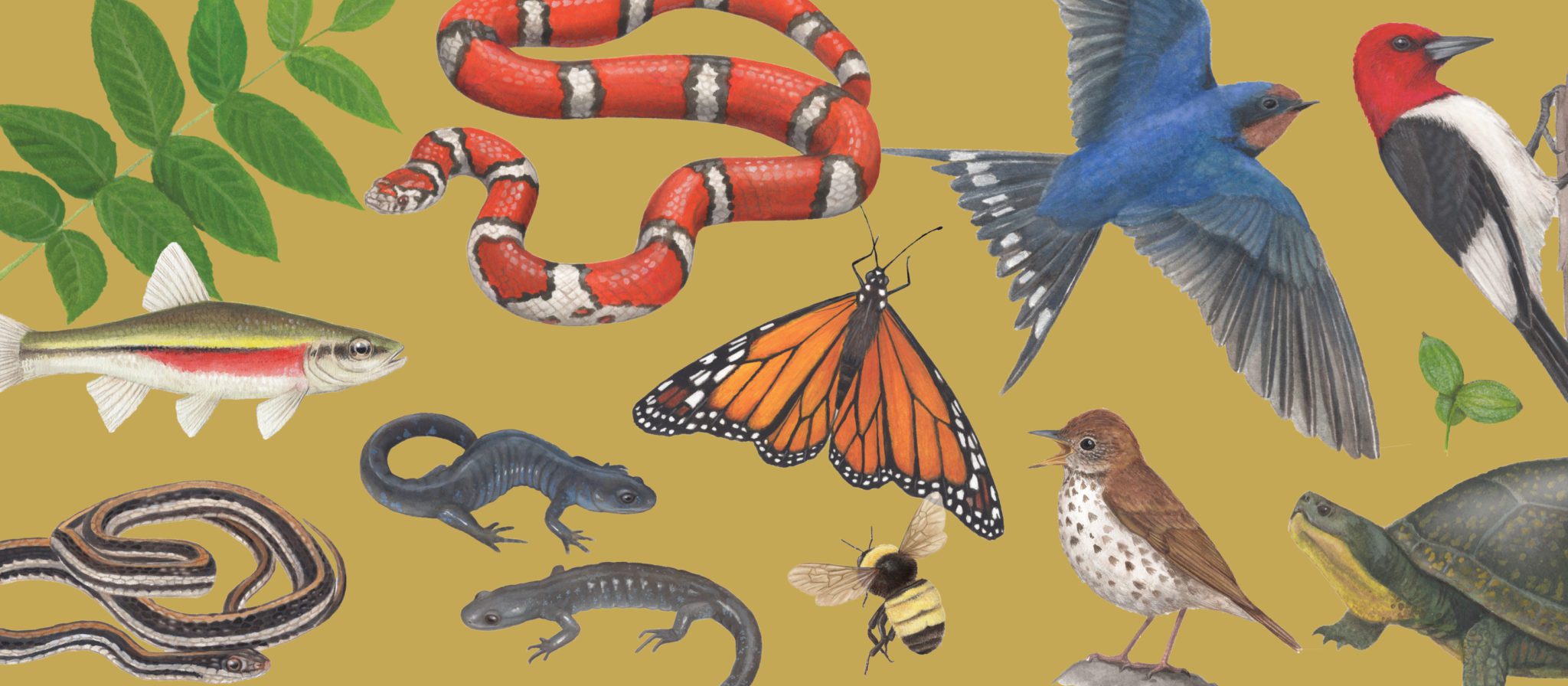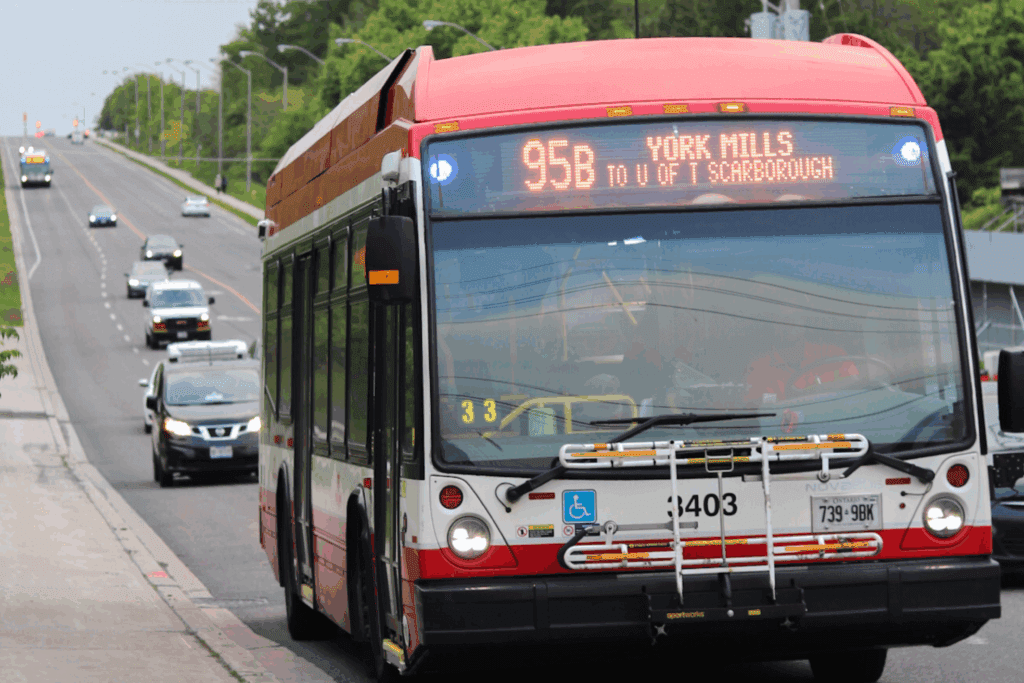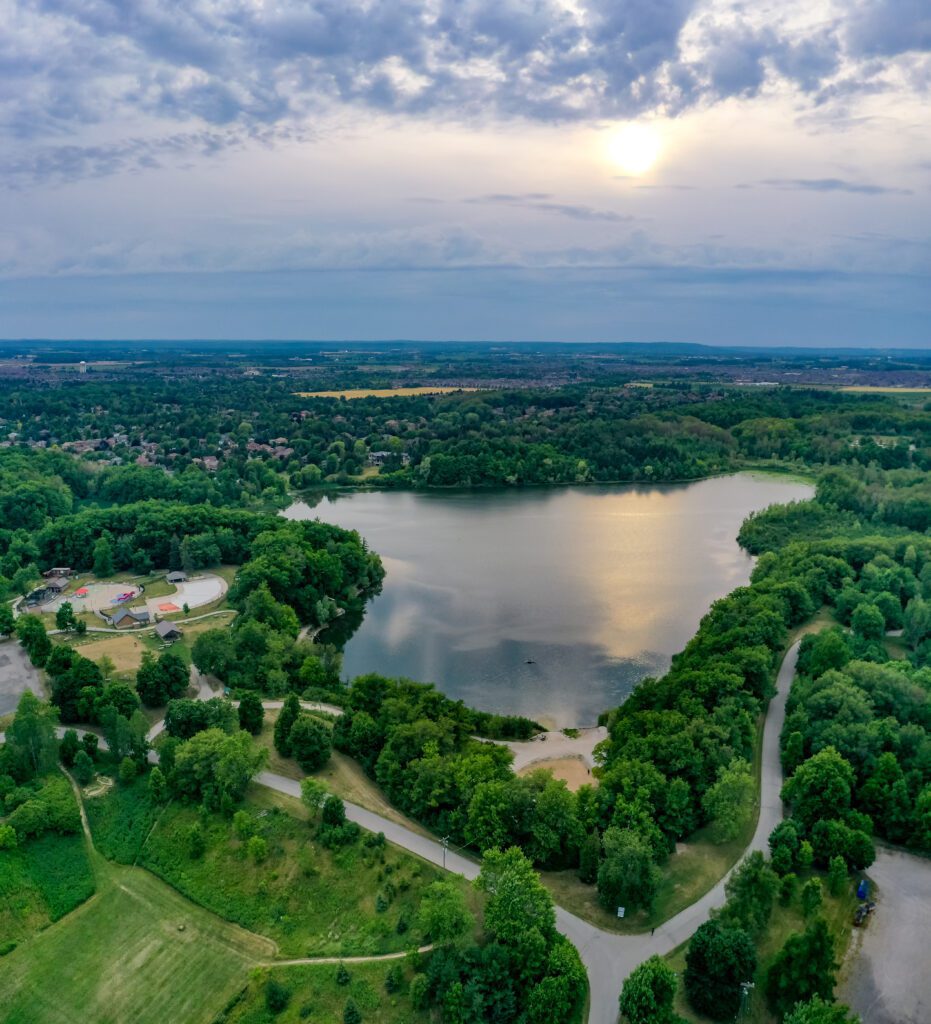This post was updated on December 20, 2022 to change the images from photos to illustrations.
It’s not an exaggeration to say that Highway 413 would be a disaster for Southern Ontario’s endangered species.
Without even accounting for future highway widening and all the sprawl development that will come with it, the project would destroy around 1000 hectares (nearly 2,500 acres) of significant natural areas, including Greenbelt land and the Nashville Conservation Reserve. It would cross streams and rivers an estimated 132 times, contaminating those rivers with every crossing.
We did some digging, and found that the Highway would negatively impact 29 federally listed threatened and endangered species.
Find out more in our report – The Road to Our Ruin: How Highway 413 Would Impact Threatened and Endangered Species
Illustrations by Ann Sanderson
1. Red-headed Woodpecker
Status: Endangered
 Once there were plenty of beautiful Red-headed Woodpeckers across North America, but habitat loss and intensive agriculture have driven them out of many areas, and it’s estimated that there are only between 4,000 – 14000 woodpeckers left in Canada! Ontario’s remaining Red-headed Woodpecker habitat is very fragmented, but Highway 413 would carve directly through one of the core remaining areas west of Caledon, destroying important breeding grounds and contributing to their decline.
Once there were plenty of beautiful Red-headed Woodpeckers across North America, but habitat loss and intensive agriculture have driven them out of many areas, and it’s estimated that there are only between 4,000 – 14000 woodpeckers left in Canada! Ontario’s remaining Red-headed Woodpecker habitat is very fragmented, but Highway 413 would carve directly through one of the core remaining areas west of Caledon, destroying important breeding grounds and contributing to their decline.
2. Redside Dace
Status: Endangered
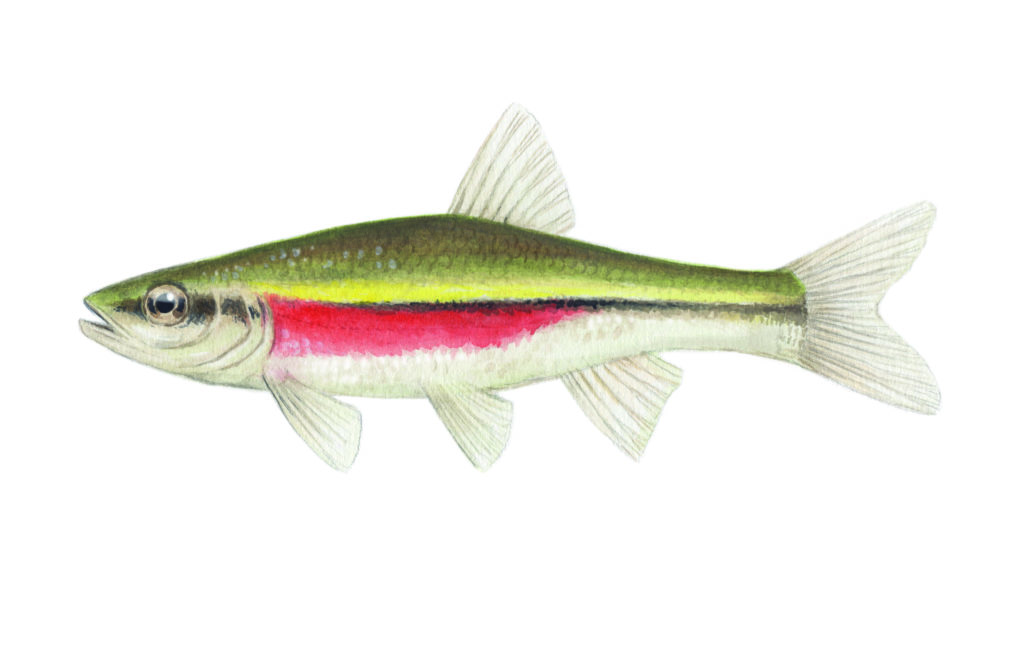 These endangered minnows need clear streams with slow-moving pools and overhanging vegetation, but intense development across the Greater Toronto Area (GTA) has pushed them further and further upstream. Now they can only be found in a few headwater streams, and sadly the Ontario government has issued a large number of permits for projects that negatively impact the Redside Dace. Highway 413 would involve around 132 stream crossings, with huge potential for upstream contamination of these otherwise clear streams.
These endangered minnows need clear streams with slow-moving pools and overhanging vegetation, but intense development across the Greater Toronto Area (GTA) has pushed them further and further upstream. Now they can only be found in a few headwater streams, and sadly the Ontario government has issued a large number of permits for projects that negatively impact the Redside Dace. Highway 413 would involve around 132 stream crossings, with huge potential for upstream contamination of these otherwise clear streams.
3. Rapids Clubtail
Status: Endangered
 The Rapids Clubtail is so endangered in Canada that Rapids Clubtails can only be found along four rivers, two of which are the GTA’s Humber and Credit rivers. These dragonflies are very sensitive to pollution and contamination of their environments, and the proposed highway would have a potentially devastating impact on their populations because of forest clearance, pollution in the waterways, and bridge-building along the route.
The Rapids Clubtail is so endangered in Canada that Rapids Clubtails can only be found along four rivers, two of which are the GTA’s Humber and Credit rivers. These dragonflies are very sensitive to pollution and contamination of their environments, and the proposed highway would have a potentially devastating impact on their populations because of forest clearance, pollution in the waterways, and bridge-building along the route.
4. Eastern Ribbonsnake
Status: Threatened
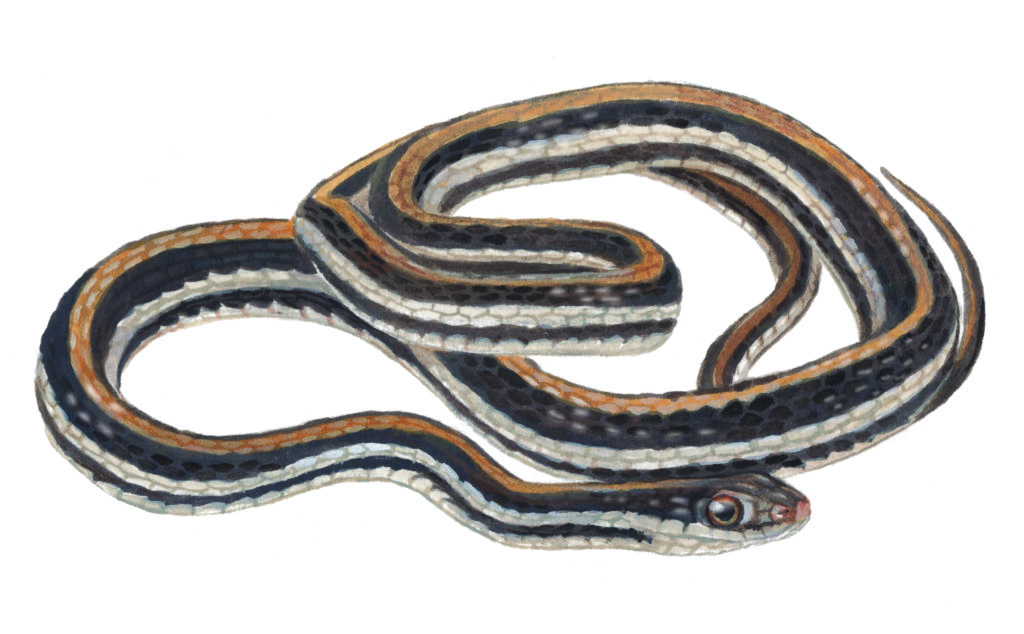 There are so few of these harmless little snakes left that their numbers are not even known, with wetland loss, pollution and road mortality some of the main threats they face. The proposed new highway and its connectors, and associated planned subdivisions near Kleinberg threaten to destroy some of their last known habitat areas.
There are so few of these harmless little snakes left that their numbers are not even known, with wetland loss, pollution and road mortality some of the main threats they face. The proposed new highway and its connectors, and associated planned subdivisions near Kleinberg threaten to destroy some of their last known habitat areas.
5. Bank Swallow
Status: Threatened
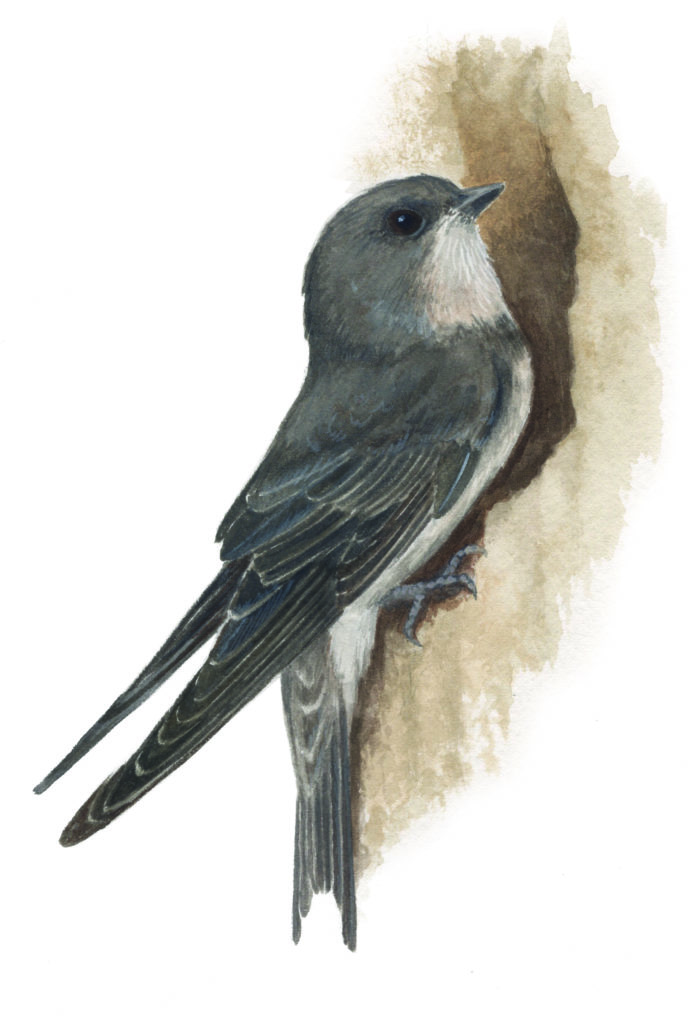 Bank Swallows live in eroded cliffs, quarries and roadsides, but the population has declined by a shocking 91 per cent in the last 50 years. The loss is mainly due to habitat loss and the destruction of nesting colonies during road construction. At least three colonies live within the Highway’s path, so any construction presents a clear danger.
Bank Swallows live in eroded cliffs, quarries and roadsides, but the population has declined by a shocking 91 per cent in the last 50 years. The loss is mainly due to habitat loss and the destruction of nesting colonies during road construction. At least three colonies live within the Highway’s path, so any construction presents a clear danger.
6. Western Chorus Frog
Status: Endangered
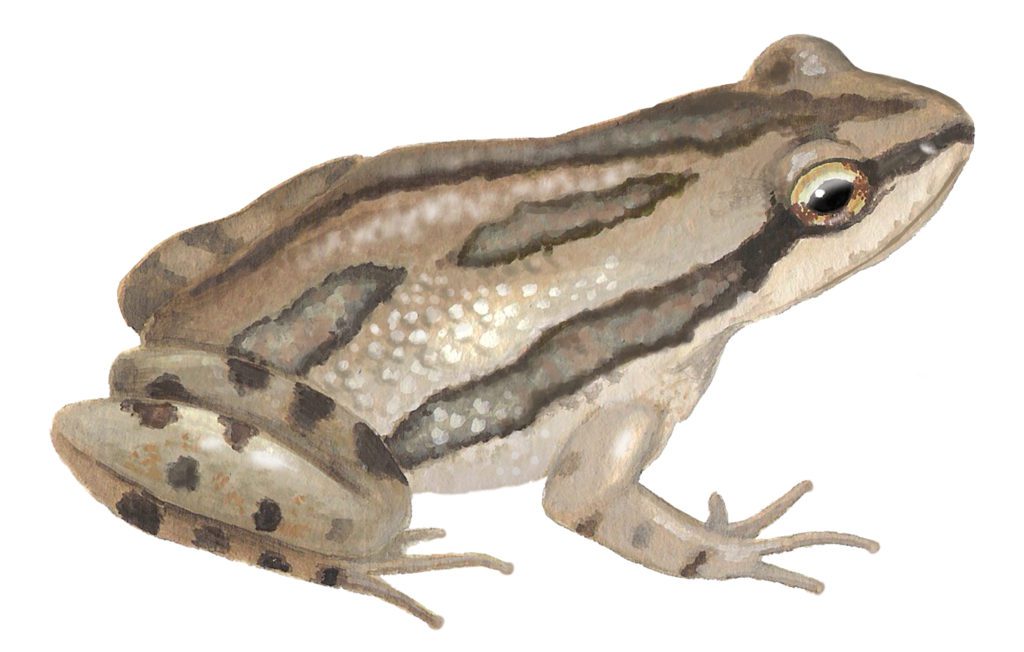 Chorus frogs get their name from their unique throaty, drawn-out call which they make together in a stunning chorus in early spring. There aren’t many of them left in Ontario due largely to loss of wetlands and habitat, but one site that does remain is near the planned site of Highway 413 west of Brampton. Pollution and salt runoff from the highway would likely destroy one of the Chorus Frog’s last concert halls in this province.
Chorus frogs get their name from their unique throaty, drawn-out call which they make together in a stunning chorus in early spring. There aren’t many of them left in Ontario due largely to loss of wetlands and habitat, but one site that does remain is near the planned site of Highway 413 west of Brampton. Pollution and salt runoff from the highway would likely destroy one of the Chorus Frog’s last concert halls in this province.
7. Eastern Musk Turtle
Status: Special Concern
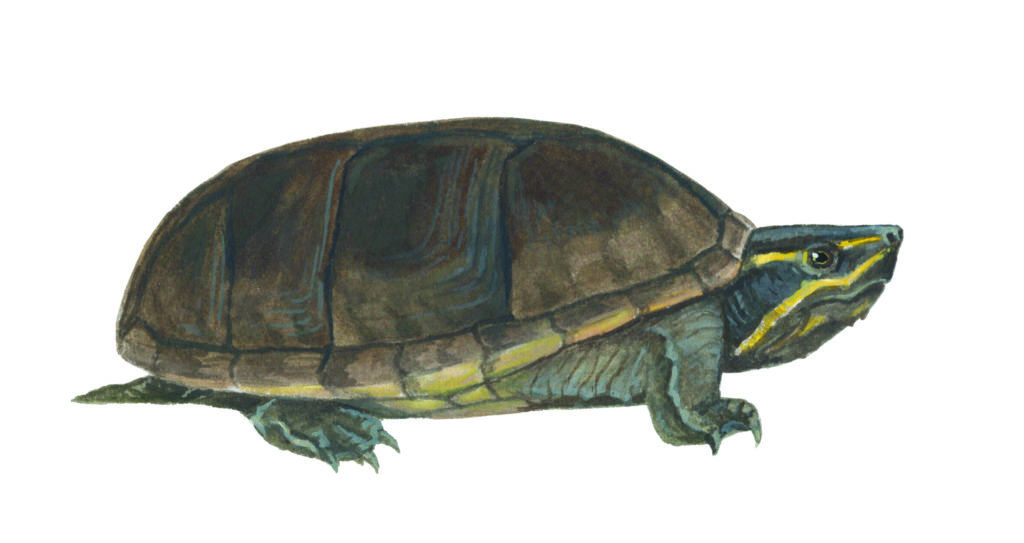 The Eastern Musk Turtle only lives in a few places in the GTA, including Heart Lake Conservation Area in Brampton, less than 1 km from where Highway 413 would connect with Highway 410. Not only are turtles highly vulnerable to road traffic, but pollution from the new mega highway, like from construction runoff and road salt running into their habitat, could be devastating.
The Eastern Musk Turtle only lives in a few places in the GTA, including Heart Lake Conservation Area in Brampton, less than 1 km from where Highway 413 would connect with Highway 410. Not only are turtles highly vulnerable to road traffic, but pollution from the new mega highway, like from construction runoff and road salt running into their habitat, could be devastating.
8. Chimney Swift
Status: Threatened
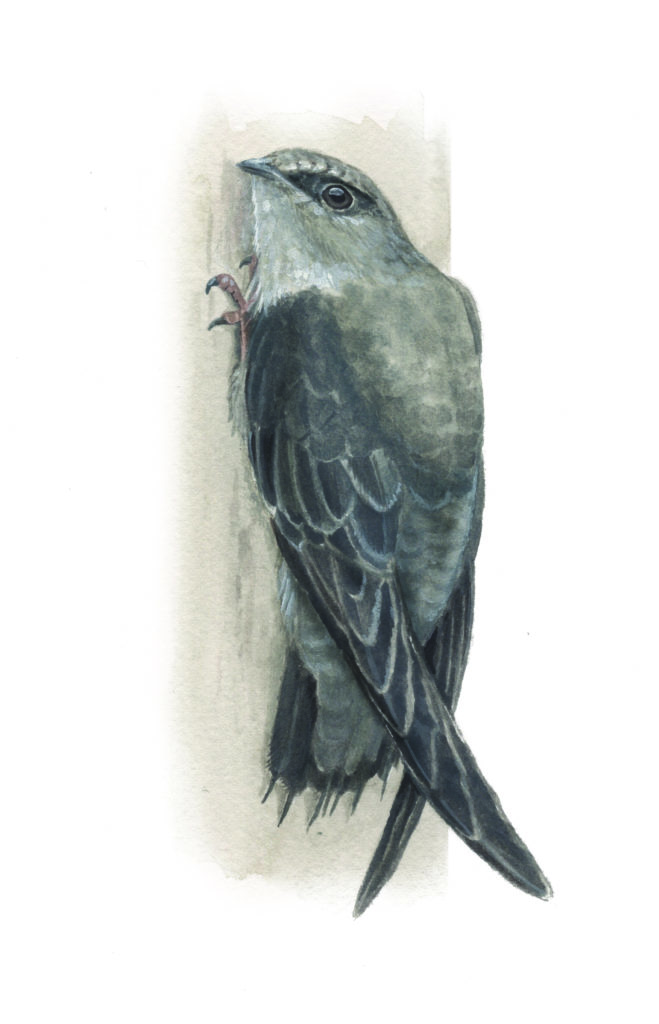 These adorable little birds once lived in the hollows of dead trees, but largely moved into man-made structures like chimneys after the removal of old-growth forests. Because they tend to live near humans and forage close to the ground, many are sadly reported killed on the roads and their numbers have declined by over 85 per cent in the last 50 years. That means that the proposed route of Highway 413 past their breeding grounds comes with extra danger to these little tweeters.
These adorable little birds once lived in the hollows of dead trees, but largely moved into man-made structures like chimneys after the removal of old-growth forests. Because they tend to live near humans and forage close to the ground, many are sadly reported killed on the roads and their numbers have declined by over 85 per cent in the last 50 years. That means that the proposed route of Highway 413 past their breeding grounds comes with extra danger to these little tweeters.
9. Butternut Tree
Status: Endangered
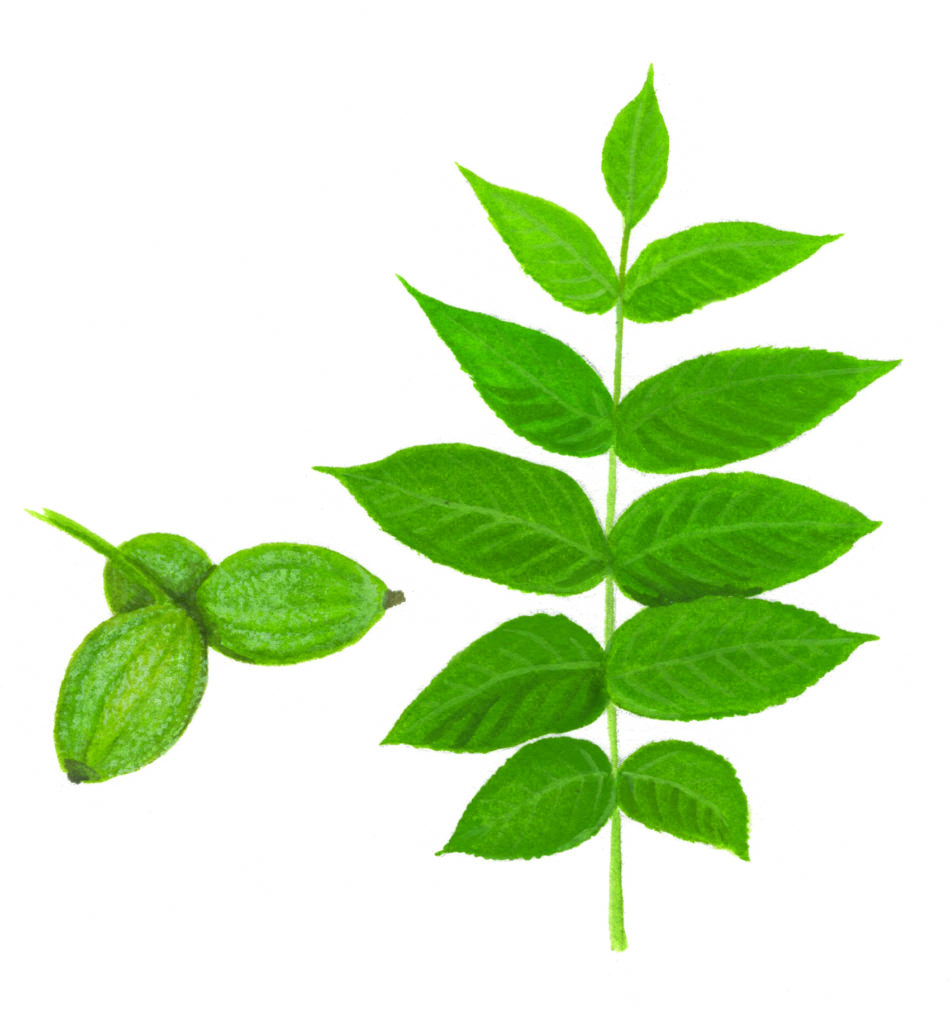 The Butternut tree’s population has sadly been devastated by an invasive disease, making remaining disease-resistant trees all the more important to protect for the sake of the survival of the species. There are a few scattered locations across the GTA, including several locations within the path of Highway 413, which would be completely destroyed. It’s not the first time this has happened – the Ontario government has routinely granted permission for these endangered trees to be removed or habitats destroyed.
The Butternut tree’s population has sadly been devastated by an invasive disease, making remaining disease-resistant trees all the more important to protect for the sake of the survival of the species. There are a few scattered locations across the GTA, including several locations within the path of Highway 413, which would be completely destroyed. It’s not the first time this has happened – the Ontario government has routinely granted permission for these endangered trees to be removed or habitats destroyed.
10. Jefferson Salamander and Unisexal Ambystoma
Status: Endangered
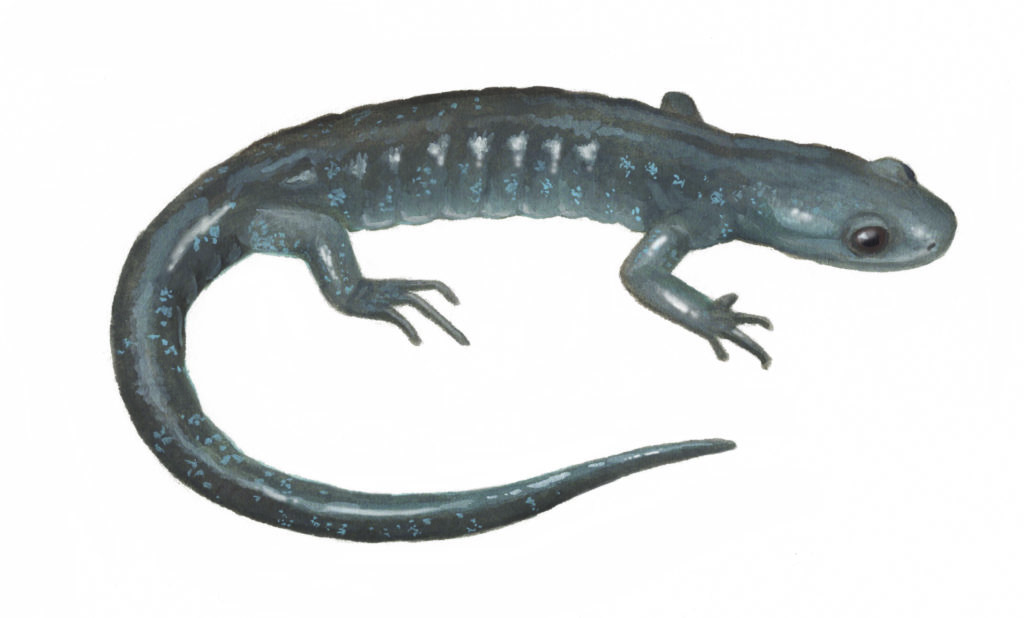 These two little salamanders are closely related, and both endangered across Canada, living only in a few locations in Southern Ontario. Because every year they migrate between breeding ponds and forest, they are very vulnerable when their habitats are cut up by roads. One place they are found is also the site of a proposed interchange between Highway 413 and the 401, which would be devastating for their numbers.
These two little salamanders are closely related, and both endangered across Canada, living only in a few locations in Southern Ontario. Because every year they migrate between breeding ponds and forest, they are very vulnerable when their habitats are cut up by roads. One place they are found is also the site of a proposed interchange between Highway 413 and the 401, which would be devastating for their numbers.
What You Can Do
This is just a tiny glimpse at the destruction that Highway 413 would cause across an incredibly biodiverse region of Southern Ontario. In the midst of this global crisis, there’s an easy alternative: cancel the expensive and unnecessary Highway 413, and protect our species and nature.
Do your part to cancel Highway 413 – ask the federal government to do a full environmental assessment of this destructive highway.
This blog was originally written by Rachel Kitchin




